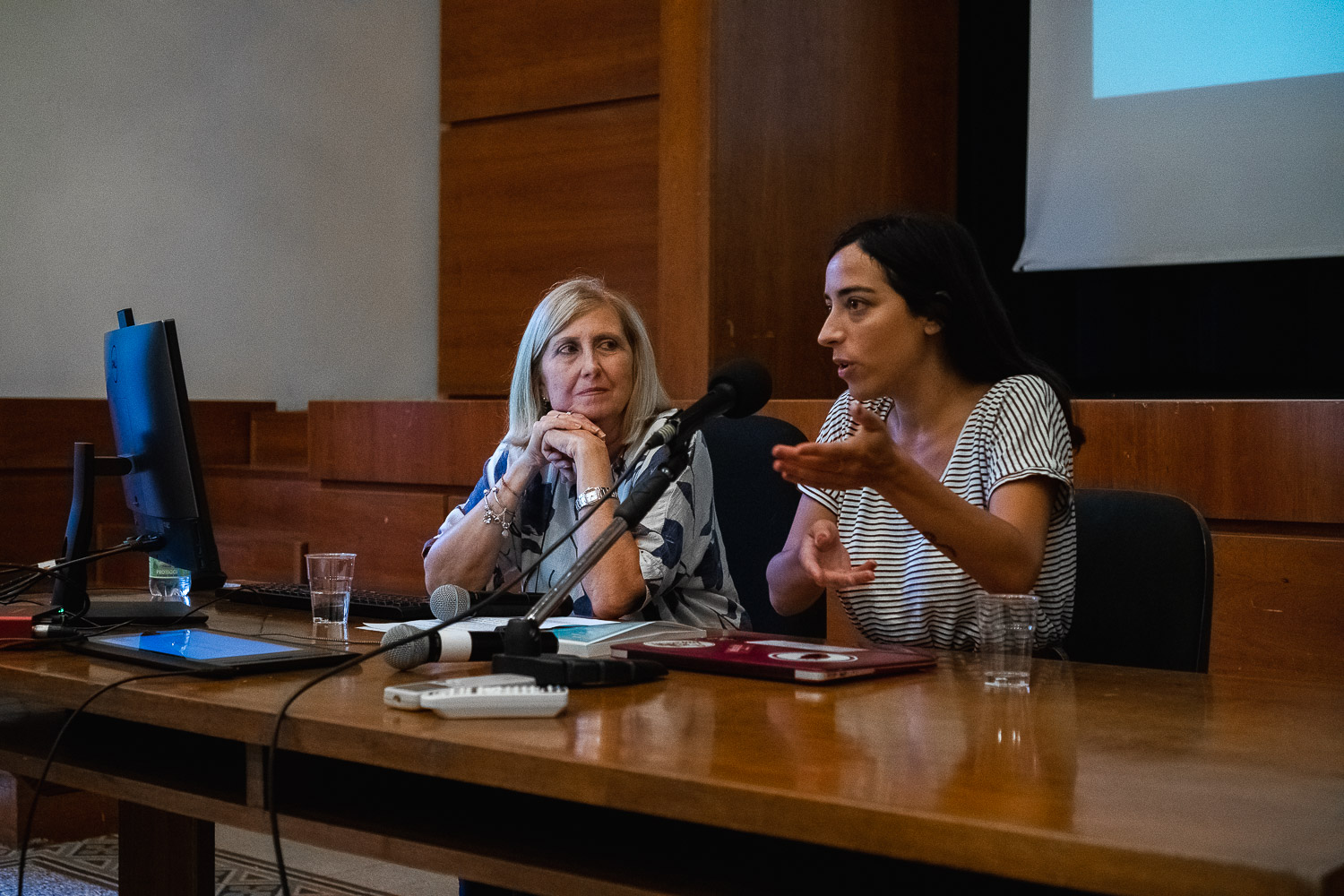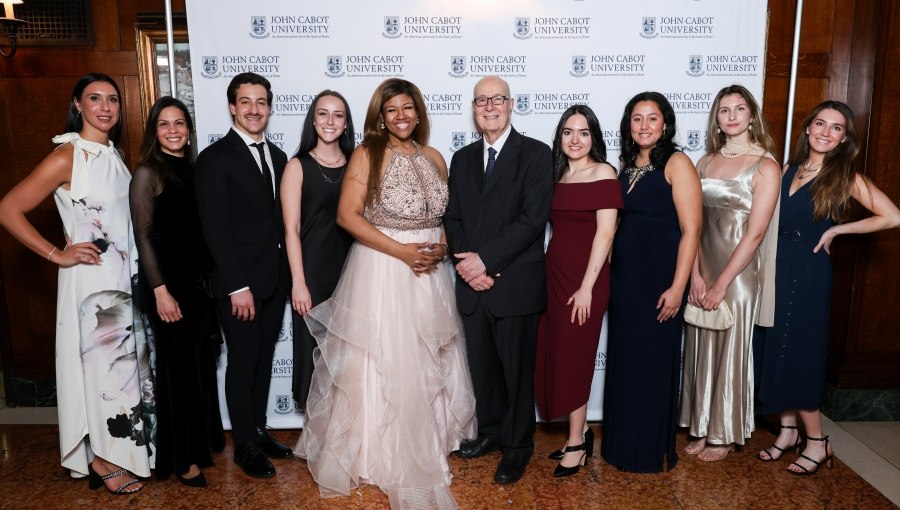Translation Talks: JCU Welcomes Renowned Author and Translator Claudia Durastanti

Claudia Durastanti (right) and Professor Berenice Cocciolillo
John Cabot University’s Institute for Creative Writing and Literary Translation in collaboration with the Department of Modern Languages and Literature presented “Translation Talks,” featuring Italian-American author and translator Claudia Durastanti on September 12, 2022. The event is the first installment of an ongoing series focusing on translation. English Professor Alessandra Grego introduced Durastanti as a “world-renowned author and translator.” Professor Berenice Cocciolillo, who teaches Introduction to Professional Translation at JCU, moderated the discussion.
Durastanti has translated 25 American novels into Italian, including works by Joshua Cohen, Donna Haraway, and Ocean Vuong. She recently completed a new translation of Fitzgerald’s The Great Gatsby. She is the cofounder of the Italian Literature Festival in London, and her latest novel La Straniera (La Nave di Teseo, 2019; Premio Strega in 2019) has been translated into 21 languages.
Born in Brooklyn, Durastanti lived in the US until the age of six. She describes herself as a “broken American“ since her parents, who are both deaf, and her grandparents spoke a Southern Italian dialect and what she calls “black-market English.” “My relatives spoke a kind of intermediate language, a combination of dialect and English that was very chaotic,” she said. Durastanti absorbed all these different layers of language and embraced her “family lexicon” until her family moved back to Italy. When she enrolled in elementary school, she was determined to learn the “proper language,” thus sacrificing dialect, which became a “forbidden language” for her.
Durastanti was introduced to the practice of translation during childhood, when she read American literature translated into Italian. “I felt most at home reading American novels translated by Italian authors such as Cesare Pavese and Fernanda Pivano.” For this reason, when asked what her original mother tongue is, Durastanti replies that it is a “language in translation.”
Durastanti is guided by the words of art critic and author John Berger who described translation not as a binary relationship between language A and language B, but as a triangle, whose third point is an invisible hidden language. “This made me feel vindicated since I had been told that I could not be a professional translator. Although I was bilingual, I had a torn relationship with my mother tongue, having lost the English of my childhood, and having landed into Italian that was not very stable. I was characterized by in-between-ness.” But according to Durastanti, it is this turbulence, this instability, that makes her a good translator.
Using translation challenges from her own work, she noted that translation is like a “detective game” where she tries to translate text without losing the contextual and cultural meaning of the original, even though her editors have not always agreed with her choices.
Durastanti discussed her experience translating The Great Gatsby and the way her translation differs from previous versions because of her decision to use the passato prossimo as the past tense instead of the passato remoto. The passato remoto refers to actions that are sealed in the past and have no connection to the present. But the main character, Jay Gatsby believes that the past can come back, that nothing is really sealed back in time, so I thought using the passato remoto was absurd.”
Despite being an author herself, Durastanti remarked that her role as a translator is not to “rewrite stories,” but to preserve the original meaning accurately. She noted that a translator’s background inevitably influences their translation, but it should not dictate who translates what.
According to Durastanti, contemporary Italian literature has been opening up to a variety of diverse voices such as Afro-Italian writers, but we are not yet seeing much diversity among translators. “We need to ask ourselves why literary translation is still so inaccessible,” she concluded.





